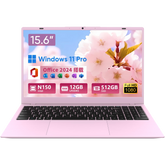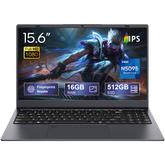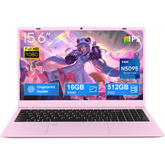BiTECOOL 15.6-inch N100 Slim Laptop | For Students and Businesses
10 steps to optimize your laptop in Japan
explanation
This blog introduces 10 specific steps for Japanese users to get the most out of their laptops. It provides useful information for beginners and advanced users, from how to choose a laptop when purchasing, to how to set it up, how to use it daily, and how to troubleshoot.
table of contents
- How to choose a laptop
- How to set up the initial settings
- Installing the software
- Security measures
- Configuring Backups
- Performance optimization
- Battery Management
- Maintenance and cleaning
- troubleshooting
- Tips for efficient use
1. How to choose a laptop
When choosing a laptop, you need to consider a wide range of factors. First, it is important to understand the types of PCs and their uses. Understand the features and advantages of each type, such as portable PCs, mobile PCs, lightweight PCs, thin PCs, and high-performance PCs. Next, check the specifications. Check the performance of each component, such as the CPU, memory, storage, and graphics card, and choose the one that suits your needs.
Now that you know how to choose a laptop, you can choose the model that's best for you. Next, we'll explain how to set it up after you buy it.
2. How to set up the initial settings
When you buy a laptop, the first thing you should do is the initial setup. First, install and configure the OS. Here's how to install Windows 11:
- Power on the laptop.
- Follow the on-screen instructions to select your language and region settings.
- Create or sign in to a Microsoft account.
- Wait until the setup is complete.
Next, we will go over account settings. Create a Microsoft account and configure sync and security settings.
Once the initial setup is complete, you'll be able to perform basic operations. Next, let's look at installing the necessary software.
3. Software Installation
To use your laptop, you need to install some basic software. Follow these steps:
- Download a web browser, office software, and antivirus software.
- Double-click the downloaded file to install.
- Once the installation is complete, launch each software and configure it.
It's also important to have the latest drivers installed, as this will ensure you get the best performance from your hardware.
Once the software is installed, the next step is security.
4. Security Measures
Security measures are the basis for using your laptop safely. First, install antivirus software. There are free and paid versions, so choose the one that suits your needs. Next, configure the firewall. By enabling the built-in Windows firewall, you can prevent unauthorized access.
With all security measures in place, you can use it with peace of mind. Next, we will explain how to back up your data.
5. Setting up backups
Backing up your data is important in case of any trouble. You can do this by using cloud storage or an external hard drive. For example, you can use OneDrive or Google Drive to back up your data regularly. It is also effective to use an external hard drive to back up your data locally.
Now that your backups are in place, it's time to look at optimizing performance.
6. Performance optimization
To optimize your laptop's performance, it is important to remove unnecessary software. To do this, follow these steps:
- Open Control Panel.
- Select “Programs and Features”.
- Select the unwanted software and click "Uninstall".
In addition, disk cleanup and defragmentation can improve system performance.
Now that performance is optimized and you're comfortable using it, let's move on to battery management.
7. Battery Management
Battery management is important to extend the life of your laptop. Here are some ways to extend your battery life:
- Do not fully discharge the battery.
- Maintain a reasonable number of charging cycles.
- Avoid high temperature environments.
You can also optimize your Windows power settings to improve battery life.
If you can manage your battery properly, you can use it safely on the go. Next, let's look at maintenance and cleaning.

8. Maintenance and Cleaning
Regular maintenance and cleaning is essential to extend the life of your laptop. Here's how to do it:
- Update your software regularly.
- Clean your hardware: properly clean your keyboard and screen.
Regular maintenance and cleaning will keep your laptop performing well for a long time, now let's move on to troubleshooting.
9. Troubleshooting
It's useful to know how to fix some common laptop problems. Follow these steps:
- Try rebooting.
- Check your internet connection.
- Use a system restore point.
If you can't solve the problem yourself, consider consulting a professional.
Having knowledge of troubleshooting will enable you to deal with unexpected problems. Finally, let's look at some tips for using it efficiently.
10. Tips for efficient use
Here are some tips for using your laptop efficiently. By using shortcut keys, you can significantly improve your work efficiency. Also, by mastering the tricks of multitasking, you can do multiple tasks at the same time.
Learning how to use it efficiently will make your daily work easier. That's it for the 10 steps to optimizing your laptop.
Summary and Recommendations
By practicing these 10 steps to optimize your laptop, your daily work will become more efficient and comfortable. In particular, the BiTECOOL Laptop 15.6-inch Display 12th Generation N100 Laptop PC is high-performance, lightweight, and easy to carry. Equipped with the latest Windows 11 Pro and the powerful Intel Alder Lake-N100 processor, it is suitable for a wide range of users from students to business people.
Take this opportunity to check out the BiTECOOL laptops. For more information, please see the link below.
Click here for details on BiTECOOL laptops
It will be the perfect choice to further enhance your laptop life.
FAQ
What are the steps to optimize your laptop?
The steps to optimize your laptop include manual optimization and defragmentation.
Is there a way to upgrade the specs of my laptop?
Ways to speed up your laptop include disabling resident applications, deleting unnecessary applications, and freeing up space with disk cleanup.
How to make your computer more comfortable?
Some ways to make your computer run smoothly include rebooting it, clearing your cache, and deleting unused programs.











Leave a comment
Please note, comments need to be approved before they are published.